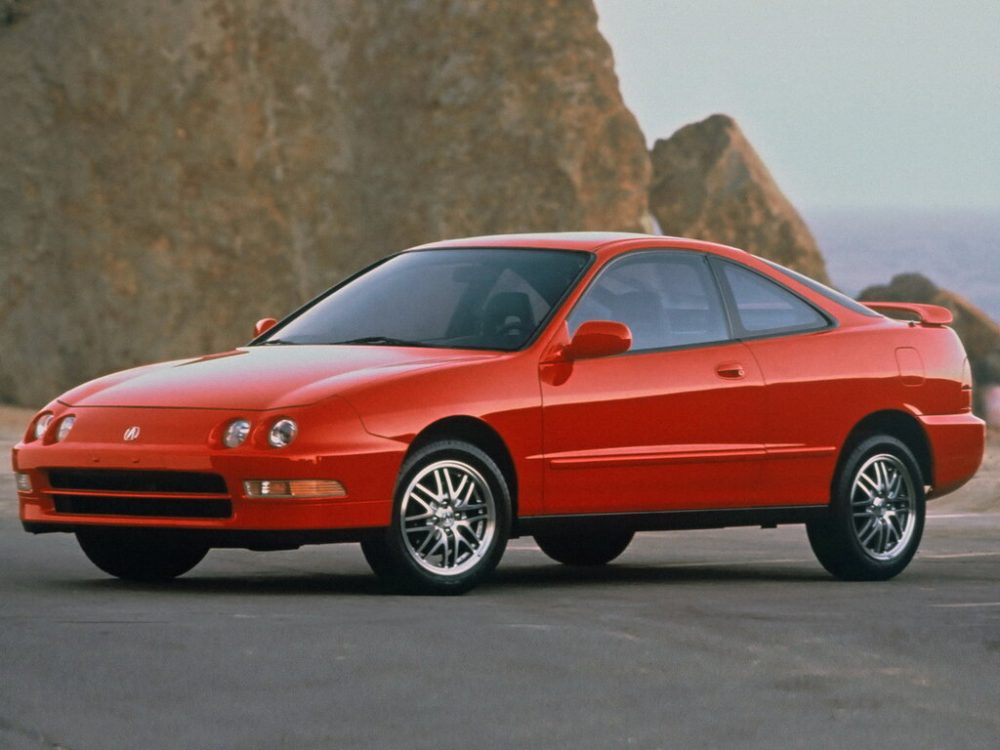The early 1990s marked a transformative period in automotive history, particularly for Japanese sports cars. Among these vehicles, the third-generation Acura Integra emerged as a masterpiece that redefined the compact sports car segment. Launched in April 1993, this iteration carried forward Honda’s engineering excellence while establishing new benchmarks for performance and reliability.
Released during Japan’s bubble economy era, the DC2/DC4 Integra represented more than just transportation – it embodied the perfect fusion of daily practicality and weekend track capability. This dual personality would later inspire an entire generation of sport compact enthusiasts.
Engineering Excellence Under the Hood
The heart of the third-generation Integra beats with Honda’s legendary B-series engines. These 1.8-liter powerplants weren’t just about raw numbers – they delivered a driving experience that few competitors could match. The standard versions produced between 140 and 170 horsepower, but the real magic lay in their character: smooth, eager to rev, and remarkably reliable.
The engine’s willingness to spin past 8,000 RPM created an addictive driving experience that owners still rave about decades later. Each powerplant was hand-assembled with precise tolerances, showcasing Honda’s commitment to engineering excellence.
“I’ve owned my ’95 Integra GS-R for over 15 years now. The B18C1 engine still pulls hard to redline and hasn’t missed a beat. These engines were built to last, and the driving experience is pure magic.” – Mike Chen, long-term owner
The transmission choices complemented the engines perfectly. The standard 5-speed manual gearbox offered precise shifts and short throws, making every gear change a rewarding experience. Even today, this gearbox is often cited as one of the best manual transmissions ever produced.
Chassis Dynamics That Set Standards
The Integra’s chassis development went far beyond basic transportation requirements. Engineers focused on creating a responsive platform that could handle both daily commuting and weekend track days with equal composure.
The front MacPherson strut and rear double-wishbone suspension setup delivered exceptional handling characteristics. This combination provided excellent feedback while maintaining reasonable comfort for daily driving.
Key chassis improvements included:
- double-wishbone rear suspension for superior handling;
- front tower bar for increased rigidity;
- precise steering rack with excellent feedback;
- four-wheel disc brakes with optional ABS.
Advanced geometry and careful tuning resulted in a car that felt alive in the driver’s hands without becoming tiring during regular use.
Type R – The Ultimate Expression
The introduction of the Type R variant elevated the Integra’s status from excellent to legendary. This wasn’t just a marketing exercise – it represented Honda’s dedication to pure performance.
“The Type R changed everything. It showed that a front-wheel-drive car could be just as exciting as any rear-wheel-drive sports car. The handling was incredible, and that engine… pure heaven.” – Sarah Rodriguez, automotive journalist
Each Type R engine was hand-ported and blueprinted, featuring strengthened internals and a higher compression ratio. The result was 195 horsepower at 8,000 RPM – numbers that seemed impossible from a naturally aspirated 1.8-liter engine in the mid-1990s.
The chassis received equal attention, with increased rigidity, special suspension tuning, and a limited-slip differential. These modifications transformed an already capable car into something extraordinary.
Daily Living with the DC2/DC4
While performance capabilities often steal the spotlight, the third-generation Integra excelled in everyday usability. The interior layout prioritized functionality without sacrificing comfort, featuring supportive seats and logical control placement.
Storage space proved surprisingly generous, especially in the hatchback variant. The rear seats could fold down, creating a practical cargo area that could handle weekend shopping or track day gear with equal ease.
Long-term ownership considerations for the DC2/DC4 platform:
- exceptional parts availability;
- strong aftermarket support;
- reasonable maintenance costs;
- proven long-term reliability;
- active owner community.
These practical attributes helped the Integra maintain its appeal long after production ended.
Beyond the Numbers
The third-generation Integra represents more than just specifications and performance figures. It embodies a philosophy of engineering excellence and driver engagement that seems increasingly rare in modern vehicles.
The car’s influence extends far beyond its production years, inspiring countless enthusiasts and helping establish the sport compact movement in North America. Its legacy lives on in the hearts of automotive enthusiasts and in the garages of lucky owners who still experience its magic firsthand.
Pros & Cons
| Advantages | Disadvantages |
|---|---|
| Exceptional handling dynamics with perfect weight distribution | Limited sound insulation compared to modern standards |
| High-revving VTEC engines deliver thrilling performance | Premium fuel requirement for optimal performance |
| Outstanding build quality and reliability | Aging interior materials in many surviving examples |
| Strong aftermarket support and parts availability | Susceptible to theft due to popularity |
| Excellent manual transmission with precise shifts | Limited rear passenger space in three-door models |
| Practical hatchback design for everyday use | Factory sound system leaves room for improvement |
| Strong resale value and growing collector interest | Stock power output modest by modern standards |
The Acura Integra DC2/DC4 stands as a testament to an era when driver engagement took precedence over creature comforts. While modern vehicles may surpass it in terms of raw performance figures, few can match its pure, mechanical connection with the driver. For those seeking an authentic sports car experience without sacrificing reliability, the third-generation Integra remains an compelling choice that continues to appreciate in both value and enthusiast appeal.

